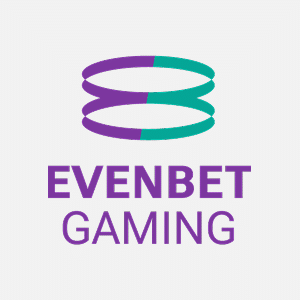At first glance, Q3 appeared to be one of the quieter periods of the year for the global iGaming industry – steady results, restrained movements, and no major shocks on the surface.
Yet a deeper look reveals a quarter defined not by noise, but by meaningful internal shifts.
While this may not have been the loudest quarter, it was one of the most informative, offering insight into the direction the industry is heading as it prepares for 2026. And as always, our role is not to speculate, but to observe, analyse, and present the signals as they emerge.
And remember, we don’t gossip – we just listen carefully and forward responsibly.
Gentoo’s revenue drops but profitability rises
Gentoo Media’s quarter-to-quarter trajectory across 2025 shows a company undergoing a deep strategic recalibration rather than a temporary correction. In Q2, Gentoo reported €24.4 million in revenue, a 19% year-on-year decline driven by weaker sports margins and slower performance in Brazil – markets that had supported growth more reliably in late 2024 and early 2025. EBITDA before special items dropped to €7.5 million, reducing margins sharply from 49% in the prior year to 31%, signalling that the company’s profitability profile was losing some of the strength it had previously relied on. At the same time, operational cash flow strengthened to €7.7 million, an early indication that Gentoo’s internal restructuring – cost discipline, performance-based traffic allocation, and a more focused commercial strategy, was beginning to take effect.
Q3 then confirmed that this restructuring was not just symbolic but materially impacting results. Revenue fell again to €22.7 million, extending the downward trend and highlighting that top-line pressure is now structural rather than seasonal. However, Gentoo delivered €9.3 million in EBITDA before special items, a notable improvement from Q2’s €7.5 million, lifting margins to 41%. This shift from Q2 to Q3 demonstrates the company’s ability to protect, and even improve, profitability despite revenue headwinds – a sign that the business is becoming more efficient, leaner, and better aligned with its new operating model. Management’s raised cash-flow guidance for the full year further reinforces the view that operational tightening is working, even as revenue continues to soften.
Sweden: A mature market showing its true form
Sweden’s Q3 2025 performance, with €610 million in GGR, shows a market that has settled into a state of controlled, incremental growth. While the quarter reflects only a slight increase from the previous period, the comparison with Q2 underscores how deeply seasonal dynamics shape the Swedish market. Q2 traditionally benefits from major sporting events and summer betting trends, often producing slightly stronger activity in online betting. In contrast, Q3 tends to lean more heavily on online casino, which is the most stable component of Sweden’s regulated ecosystem. That pattern held this year: Q3 did not replicate Q2’s modest uplift but instead delivered a more even, predictable revenue base.
What makes this comparison meaningful is the consistency. Between Q2 and Q3, Sweden’s GGR movement was small, but it reinforces a longer-term trend observable across 2024-2025: the market has reached maturity, and significant quarter-on-quarter swings have become less likely. Operators active in the jurisdiction note that growth is increasingly tied to improving customer lifetime value rather than expanding user bases, meaning that product quality, safer gambling tools, and compliance efficiency matter more now than promotions or acquisition campaigns. Regulatory oversight remains strict – sometimes tightening further – which limits aggressive commercial manoeuvres but creates a more stable competitive environment.
Thus, when viewed against previous quarters, Sweden’s Q3 performance is less about numerical excitement and more about structural reliability. Market stability, consistent casino-led revenue, and a high compliance bar combine to make Sweden one of the clearest examples of what a fully matured European iGaming market looks like. Even with moderate growth, Sweden continues to demonstrate that stability – not volatility – is the new benchmark for long-term sustainability in regulated gaming.
DATA.BET turns momentum into market power
DATA.BET’s Q3 2025 results mark one of the clearest acceleration points in the esports betting sector. The company reported 60% growth in stake volume and 79% growth in profit, along with significant increases in active bettors and average bet size compared with Q3 2024. While specific Q2 results are not publicly broken out, industry commentary suggests that Q2 delivered strong momentum but did not yet show the explosive performance that characterised Q3. Analysts note that Q2 benefited from major esports tournaments and ongoing player migration to digital-first betting products, but Q3 took the trend further by solidifying esports as a mainstream revenue generator rather than an emerging vertical.
When contrasted with earlier quarters, Q3 stands out as a structural shift rather than a cyclical boost. Esports consistently grew across 2023-2024, but this quarter demonstrates the vertical’s increasing influence over operator strategy, bettor engagement, and product innovation. DATA.BET effectively moved from “fast-growing provider with potential” to “category leader reshaping operator expectations.” The comparison highlights not only the company’s own acceleration but also the broader maturation of esports betting as a pillar of modern iGaming.
GiG Software expands strongly with a capital twist
GiG Software Plc delivered one of its strongest quarters in recent memory, but the analysis becomes more nuanced when compared to previous periods. In Q2 2025, the company generated €9.3 million in revenue, up 27% year-on-year and slightly above Q1 levels, confirming that the B2B division is stabilising after a volatile 2024. More importantly, GiG returned to €1.0 million in adjusted EBITDA, a turnaround from the €1.1 million loss recorded in Q2 2024 and a clear improvement from earlier quarters in 2025, where profitability margins were considerably thinner. This quarter demonstrates the effect of streamlined operations, improved scalability of the platform, and increased demand from regulated and emerging markets. Compared with Q1, which reflected cautious recovery, Q2 shows more confident momentum and operational consistency.
Yet, despite the stronger numbers, GiG’s post-quarter capital raise introduces an important counterbalance. While the business is performing well operationally, the additional funding signals that expansion, whether technological, commercial, or market-driven, still requires external financial support. This differs from earlier quarters, where GiG appeared to prioritise stabilisation over aggressive scaling. The shift from “recovery mode” to “investment mode” is evident, but it also exposes the company to heightened expectations around execution. In comparing Q1 and Q2, the progress is undeniable, but the reliance on fresh capital raises questions about how costly the next phase of growth will be.
DraftKings enters its efficiency era
DraftKings’ Q2 2025 results revealed a meaningful evolution in the company’s growth pattern compared with earlier quarters. The company posted $1.513 billion in revenue, a strong 37% increase versus the same period in 2024. Unlike Q1, which leaned more heavily on promotional intensity and seasonal sports activity, Q2’s growth was driven by more fundamental improvements: stronger sportsbook hold, more disciplined marketing spend, healthier iGaming engagement, and more effective user monetisation. This shift marked an important transition away from the high-cost acquisition cycles seen in previous quarters and toward a more balanced, margin-aware growth strategy.
Q3 then validated this transition. DraftKings reported $1.14 billion in Q3 revenue, a more modest year-on-year increase, but one entirely consistent with how the company historically performs between major U.S. sports cycles. Instead of depending on seasonal spikes or costly promotions, DraftKings delivered steady results supported by operational discipline. Market commentary highlights that hold rates remained healthy across core sports categories, promotional spending continued to decline as a share of revenue, and overall user engagement remained stable despite Q3 being structurally one of the quieter quarters in the U.S. sportsbook calendar. This is significant: in previous years, Q3 often exposed weaknesses in operators’ cost structures and retention strategies, but in 2025 DraftKings demonstrated that its improved efficiency from Q2 carried through into more challenging seasonal conditions.
Thinking Out Loud…
Q3 may have appeared quiet at first glance, but a closer look reveals a period defined by meaningful internal adjustments and strategic realignments across the industry. While the headline numbers lacked dramatic movements, the underlying trends paint a far more dynamic picture. This was a quarter in which companies focused less on outward expansion and more on strengthening their operational frameworks, optimising their cost structures, and preparing for longer-term stability.
Rather than being driven by volatility, Q3 was shaped by subtle but important shifts: efficiency taking precedence over aggressive scaling, market maturity becoming more visible in regulated jurisdictions, and emerging verticals transitioning into recognised pillars of growth. The industry demonstrated that progress does not always come in the form of headline-grabbing surges; sometimes it emerges through quiet, steady refinement and disciplined execution.


















